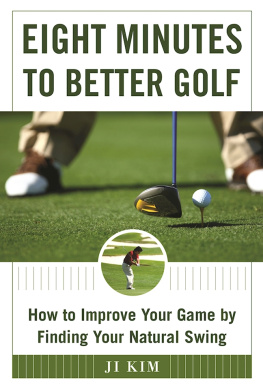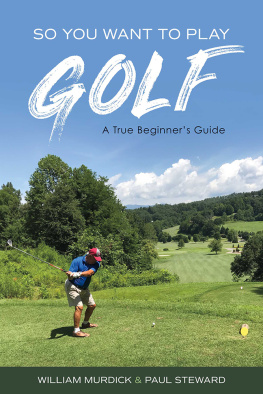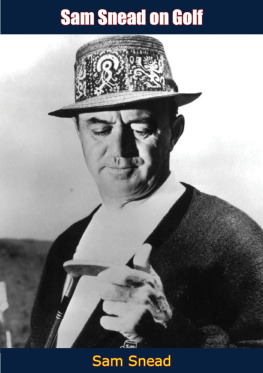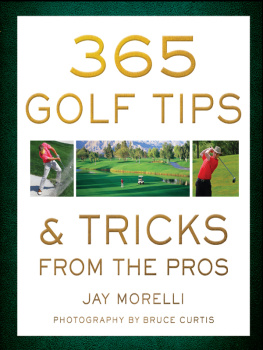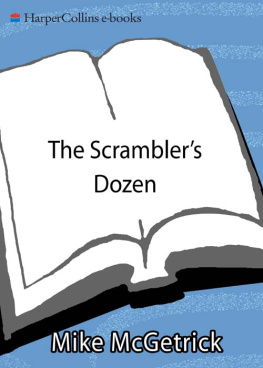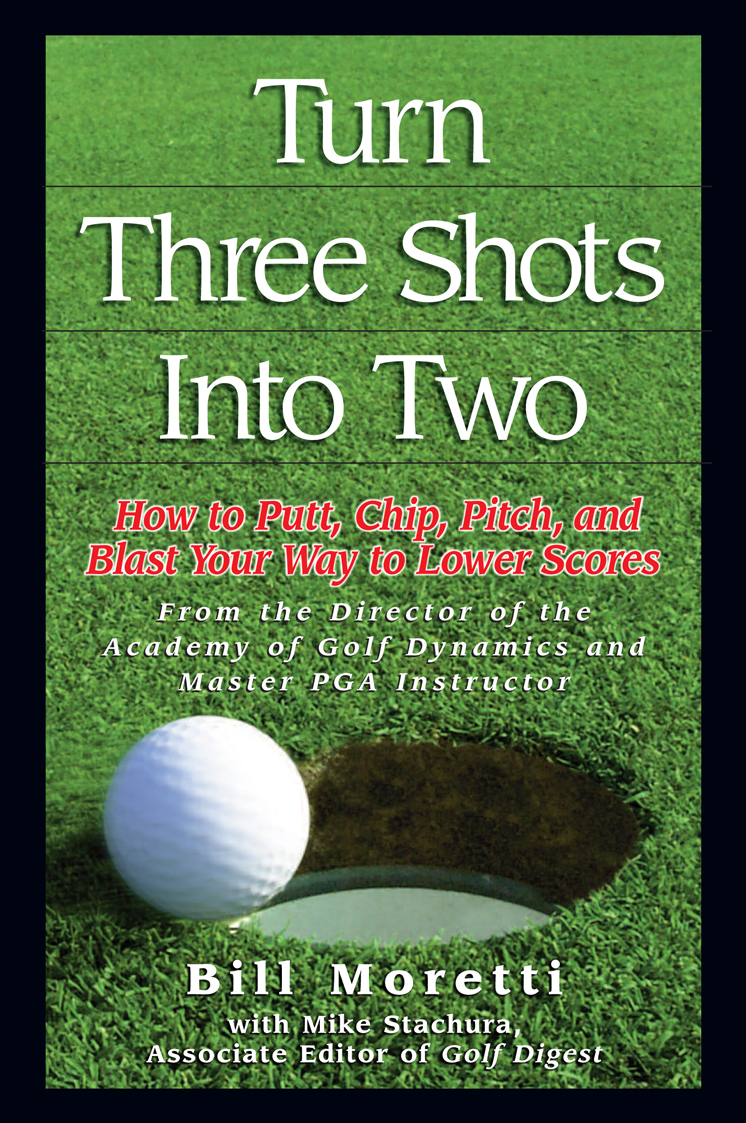


To my parents, William and Catherine Moretti; my wife, Marilyn; and all golf instructors who share in my passion and devotion to help others play better golf.
Contents

The Value of a Good Short Game
Putting
Chipping
Pitching
Bunker Play
The Short Answer to Lower Scores
Ac k nowledgments

I would like to take this opportunity to thank the following people who have made it possible for me to pursue my golf career:
To my mother and father, Catherine and William Moretti Sr., who gave me their love and provided me with the necessary resources to play and study golf.
To Barry Brown and Steve Shrader, two great friends and golfing companions who helped me through my youth and helped me overcome many obstacles that I have encountered throughout my life.
To Mike Adams for giving me confidence in my ability to teach golf.
To Elmer Schlein, who has been a mentor and a guide through life.
To Julius Germano for being a great help to me in marketing and promoting our golf schools and for the friendship we share.
To Father Laurence Connelly, who has given me spiritual guidance.
To Joe Daleo for supporting me and our golf schools over the years and for his friendship.
To my staff, who give our students, and me, 100 percent every day. With their help, we improve our teaching methods continually.
To all of the students who have attended our golf schools, I thank each and every one of you for your support; it has been a privilege and a joy to help improve your golf games.
Finally, to my wife, Marilyn. I could not ask for a better companion and life mate. She has given of herself unselfishly to support me in my teaching pursuits.
INTRODUCTION

The Value of a Good Short Game
It could be any Friday afternoon of the golf season on the PGA Tour. The action and mood are typical. Players jockeying for the lead, players scrambling to make the cut, players simply finishing off the day. Nothing especially at stake, perhaps, but then again, because this is the PGA Tour and the scores are there for all the world to see, for these players everything is at stake.
The mind-set for many of the best golfers in the world who earn their living playing golf is a simple, unforgiving, relentless onenamely, you are your number. What you shoot and how you finish says a lot about how you are going to feel. At least for a little while. That is why this game is so appealing. Because even when the stakes are relatively low, the challenge, the intensity, remain high.
And so, as you, the golf fan, sit in your den and watch the proceedings, pay attention to what youre watching, and youll learn a very important lesson about golf and the business of scoring. At any 30-second point in the days broadcast, you are very likely to see the following sequence: First, theres Player A facing a testy little pitch from thick greenside rough to a pin just a few paces from the edge of the green. Meanwhile, Player B is studying a 60-foot putt that he must get close to the hole if hes going to save a stroke or two. And then theres Player C, who finds his ball just short of the green in the fairway with a long, uphill chip shot that he, too, must find a way to get up and down. The result in every case is the same. Each man manages to get up and down. He takes two shots instead of three, and he avoids another stumble that might have ruined his days play. Does it happen this way every time? Clearly not. But it happens enough to make the difference between a score thats over par and one thats under par.
And thats where your scoring is going to improve, too. Thats the lesson available every week on your television set. Its not very elaborate, but its a mantra you should begin to know as well as your own name: Scoring in golf begins and ends with the short game.
It is not always the most glamorous part of the game, not the kind of thing that draws oohs and ahs from the fans the way blasting tee shots with incredible distance naturally does. Watch a group of golf fans head over to one of the expansive practice areas you see at pro tournaments. Do you think the first move they make is to check out how Player A is working on his short game? How much time do you think those fans would devote to watching Player B monotonously hit 10, 20, or even 50 four-foot putts in a row? Do you think theyd be excited to watch Player C perfecting his long bunker-shot technique? Odds are, theyd probably walk right by that short-game area as if it were a spot where some maintenance workers were trimming some shrubbery.
Its the long ball that gets everybody excited. Still, while Tiger Woods draws a lot of attention for his long drives, its the little shots he can hit around and on the greens that have propelled him to most of his victories. The guy who knows how to get the ball in the hole is the one who will be the most formidable competitor and the most successful player. Thats a fact in every level of golf. The old saying You drive for show and you putt for dough isnt just a catchy phrase. It has real weight to it. Lets look at an example. If you look at the Top 10 players in driving distance in 2000 on the PGA Tour and compare their earnings with those ranked in the Top 10 in putting, I think the evidence will be pretty compelling.
Top 10 in Driving Distance and Earnings
| John Daly | 301.4 yards | $115,460 |
| Tiger Woods | 298.0 yards | $9,188,321 |
T3 | Davis Love III | 288.7 yards | $2,337,765 |
T3 | Phil Mickelson | 288.7 yards | $4,746,457 |
| Scott McCarron | 288.5 yards | $495,975 |
| Casey Martin | 288.3 yards | $143,248 |
| Harrison Frazar | 287.3 yards | $608,535 |
| Stuart Appleby | 286.4 yards | $1,642,221 |
| Mathew Goggin | 286.3 yards | $414,123 |
| Robert Allenby | 285.8 yards | $1,968,685 |
TOTAL $21,660,790 |
Top 10 in Putting Average and Earnings
| Brad Faxon | 1.704 | $999,460 |
| Tiger Woods | 1.717 | $9,188,321 |
| Phil Mickelson | 1.726 | $4,746,457 |
T4 | Paul Azinger | 1.733 | $1,597,139 |
Next page

